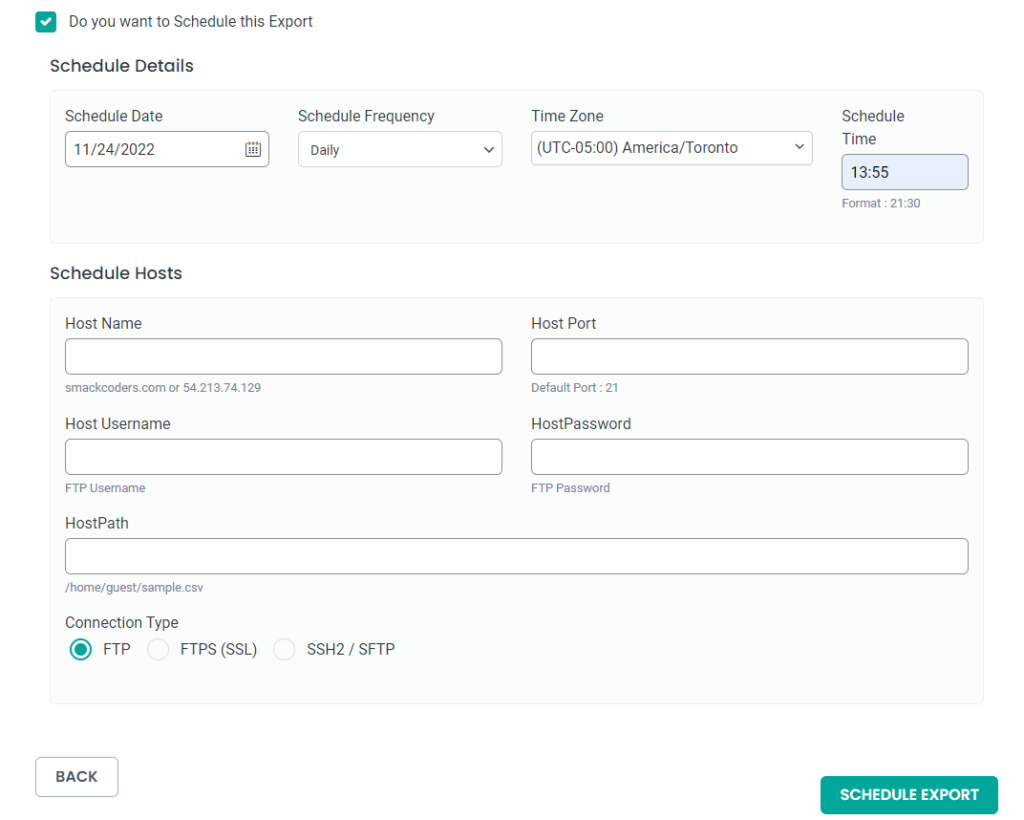Last updated - November 16, 2023
An online shopping store visitor’s main task is browsing products, adding favorites to the cart, and making a purchase (completing the order). WooCommerce stores have a plethora of products and orders to maintain. You may need to update products and add new products consistently. Or you may want to migrate Orders & Products data to your new website. But when you move to a new store, copying each product or order details is complicated and time-wasting. There you need an easy way to make it quickly. Exporting and importing data is the simplest way to migrate your WooCommerce Products & Orders data. Here we will discuss this briefly.
WooCommerce
WooCommerce is a famous WordPress plugin. It turns your normal WordPress site into a fully-functional eCommerce store. With over 5 million installations, WooCommerce stands out from its competitors and makes it hard to resist when developing an online store using WordPress. It is open-source and gives its users complete ownership of data along with the store’s content. WooCommerce is owned by none other than Automattic, the team behind WordPress and Jetpack.
WooCommerce Product Types
WooCommerce has six product types by default namely Simple Product, Virtual Product, Downloadable Product,
Grouped Product, External/Affiliate Product, and Variable Product. Identifying each product type and its benefits enables optimum conversion. Below is the product types explanation.
- Simple Product – It is a unique physical product that requires shipping but doesn’t have any options. The majority of products come in this type.
- Virtual Product – This product type doesn’t require a shipping option. If you enable this, it will disable the shipping-related fields.
- Downloadable Product – Selecting this product type will activate a new field to provide a product download link. Customers can download the file via the link sent in the email once they have purchased the product.
- Grouped Product – It is a collection of simple products that can be bought separately.
- External/Affiliate Product – The product which is listed and described on your website but sold elsewhere.
- Variable Product – Variable Products are products with variations. Each has a different SKU, price, etc.,
How to Create a Product in WooCommerce
On your WordPress dashboard, hover over the Products menu and click Add New to create a new product. Fill in the default details like product name, description, categories, tags, product short description, add a product image, and add product gallery images.


The product description can be long and you can explain the benefits of the product with it. Ensure to optimize the product title and description for keywords.
Choose your Product Type
In the product data meta box, choose one product type from the dropdown.
Enable Virtual, if you sell a digital product, and enable downloadable if you want to attach the downloadable file of the product.


We will explain how to add a simple product in this article. But the upcoming process is the same for all other product types except for a few options.
Complete the Product Data Meta Box
After you choose the product type, next you need to fill in the details in the Product data meta box. The product data box includes seven sections: General, Inventory, Shipping, Linked Products, Attributes, Advanced, and Get more options.
- General Tab
Provide the price value for regular and sale prices inside the general tab. Include the sale price value if you offer a discount or just add the regular price. Select the tax status – taxable or not and if yes, that is taxable, choose the tax class.


- Inventory Tab
The Inventory tab lets you manage the stocks. To make it visible on the products page, go to WooCommerce > Settings > Products > Inventory and enable stock management. Add the SKU value. SKU is a unique identification number that has to be given for every product or service in WooCommerce. Either SKU can be provided manually or use a plugin available especially to generate SKUs.


Enable the Manage stock to see fields like stock quantity, allow backorders, and low stock threshold. Otherwise, you will have to manually update the stock. Once you enable it, WooCommerce will show the product.


Stock quantity – provide the number of available pieces
Allow backorders – If the product will be available soon. Otherwise, make it do not allow.
Low stock threshold – Enter the low stock value here to get notified when the threshold is reached.
- Shipping
Enter the weight and dimensions of the product to be shipped. You can see there is a field called shipping class. It groups the products on weight limits. That is, it will let you organize the products that are having the same weights and use a specific shipment service.


- Linked Products
Provide product recommendations to the customers with the help of this linked products option. You can cross-sell(recommending similar products on the product page that customers will like), and up-sell(recommending more expensive products with valuable features). The upsell product can be added to the checkout page also.


- Attributes
In the attributes tab, you can add many attributes such as color, size, etc., Click the Add button adjacent to the Custom product attribute and enter the attribute name, some attribute values are separated with pipelines. You can add several attributes just by clicking the Add button. Click Save attributes after you completed filling in the details of the attributes.


- Advanced
In the advanced tab, you can add a purchase note which will appear after an order is placed. You can set the order position for the item using menu orders and also enable the reviews.


- Get more options
This tab will recommend a list of premium WooCommerce extensions to buy and use in your store.


That’s it you have added all the product details, now click the Publish button to make the product live just like adding the blog post.
WooCommerce Orders
Orders are generated or created after a customer finishes the checkout procedure. These are visible only to Admin and Shop Manager clients. Each order has a unique ID and every order has a specific status too.
Order Statuses include Pending payment, Failed, Processing, Completed, On hold, Canceled, Refunded, Authentication Required, and Checkout draft. These statuses help to track the order from Pending payment to Completed.
The orders are managed inside the Orders page under the WooCommerce menu. You can manually add orders on the Orders page. To add an order manually, follow the below.
- Click Add New and the single order page will appear.
- Provide customer details and line items. Apply coupons, and fees, then calculate the totals.
- Set anyone’s status for the order like Completed or Pending payment.
- Click Save. The new order was added successfully.


What is the Importer Plugin – WP Ultimate CSV Importer
A powerful import-export plugin. It can handle complex data import-export processes and let you import, and export bulk data in CSV/XML files. CSV Importer is available on wordpress.org to download for free. The free version has 20,000+ active installs and 1,117,755 total downloads – thus making it one of the most popular plugins available.
Go and download Ultimate CSV Importer for free. This free plugin has features like import-export posts, pages, custom posts, custom fields, comments, reviews, taxonomies, users, and WooCommerce products & bundles. However, you can find more advanced features in CSV Importer Pro. CSV Importer pro offers update and scheduling options. It supports popular plugins like WPML, Toolset, JetEngine, ACF, WooCommerce, Yoast, RankMath, etc.,
How to Migrate Products and Orders in WooCommerce?
Export Products & Orders from your old website and import them into your new website. All you need to do is just follow the simple steps explained below to get the migration done successfully.
Export WooCommerce Products & Orders
WordPress default export tool exports all data in the format of the XML file. However, it has no option to export specific data and no choice to choose other file formats. That’s why you need an exporter plugin. Let’s take a look at how to export WooCommerce Products & Orders with CSV Importer pro.
- Navigate to the Export tab
- Choose the module ‘Woo-Commerce Products’ to export products or select ‘Woo-Commerce Orders’ to Order export and hit the Continue button.


- On the next page, you will have to configure the file name, file type, and advanced filter options.
- Use the split records option to split the records and export them into separate files.


- Configure the filters to extract specific Orders/Products records. You can export data of a specific period, a specific category, specific inclusions, etc.,


- Here schedule options are available for export. Just check the ‘do you want to schedule this export’ and provide the scheduling details like date, time, frequency, and timezone. Afterward, click Schedule export.


- If you don’t require the scheduling option, just click Export > Download to save the exported file on your computer.
Import Woo Products and Orders to the New Site
Similar to the default export in WordPress, import options have some restrictions. Import your Woo Products & Orders via CSV/XML instantly by following 4 simple steps with WP Ultimate CSV Importer.
- Upload CSV/XML using options like upload from desktop/FTP/SFTP/external URL.
- Next to that, choose the post type from the dropdown. The post type to import orders is’ WooCommerce Orders’ and the post type to import products is’ WooCommerce Product’.


- Further on the next page, start to map all the CSV headers with the corresponding WordPress fields. Most importantly map the order-related fields and product-related fields.


- After you map, enter a template name inside the ‘Save this mapping as’ text box.
- Use the media handling page(letting it be enabled by default) to import external URL images and proceed to the next action with continue.
- Click Import to immediately import your Products/Orders to WooCommerce.


- After the import is completed, make sure to verify the results with ‘View Logs’. Or verify it by visiting the Orders & Products page inside WooCommerce directly.
Conclusion
Hope this article is helpful to learn how to migrate WooCommerce Products & Orders by importing and exporting files. CSV Importer is one of the best import-export plugins to use for data migration in WordPress. For more details, leave a reply in the comment below.











